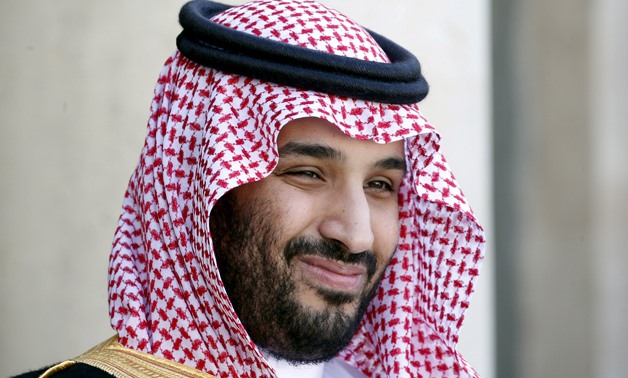
Mohammad Bin Salman Al Saud - File photo
Here are the scenarios that our analyst Mohamed Abu El-Nour lay out about the Saudi Iranian relations: The escalation of Ayatollah’s propaganda speech against the Kingdom. The Prince's success in curbing the influence of Tehran ... Hostile operations against Riyadh... Calming from Rouhani in order to avoid punitive measures
The young prince, Mohammed bin Salman, who is just under 32 years old, ascended to the second position in Saudi Arabia, crown prince. With this remarkable rise, a number of scenarios of Saudi-Iranian relations could be expected in the coming period to consider the heated rivalry between the two countries in a number of areas of conflict in the region.
The first scenario: Escalation of the propaganda speech of the Ayatollah against the kingdom
This scenario adopts the concept of Iranian reliance on official and semi-official government media to direct messages, dispel anger and express opinions in closed chambers. In view of the role of Prince Mohammed bin Salman as defense minister in the Kingdom and commander of the expanded regional war against the Houthi coup in Yemen, It is certain that the propaganda machine of Ayatollah with its maximum capacity will attempt to deduct from the young prince's balance and to diminish his success and his high office.
The official Iranian media began their role and launched a sharp attack on Mohammed bin Salman and his father, saying that the move was tantamount to a "coup against Mohammed bin Nayef," although Prince Mohammed bin Nayef was quick on his part and waged any attempts of sedition and showed allegiance to his cousin Prince Mohammed bin Salman, reflecting a smooth and flexible transfer of power among the cousins in the royal family in Riyadh, which refutes the Iranian story from the ground up.
The second scenario: The Prince's success in curbing Tehran's influence
Since the success of the Khomeini revolution in the overthrow of Shah Muhammad Reza Pahlavi, Tehran's policy makers have worked to create fields of conflict outside the political borders of the Iranian Republic so as to ensure two factors: to fill public opinion and internal political spectrum with foreign adventures and to ensure the survival of the system and the mobilization of sectarian forces in the Arab countries to achieve the aspirations of Khomeini.
The course of events reveals that thispolicy has come to fruition in the last three decades, especially after the end of the first Gulf War, and the state of political and strategic emptiness suffered by most of the Arab leaders (Yemeni President Ali Abdullah Saleh only denounced the arming of the Houthis by Iran).However, since Bin Salman took over the Ministry of Defense, specifically in April 2015, he has dealt firmly with Iranian ambition in the region and waged an extended war against the Houthi coup in Yemen, which posed a real threat to the southern gate of the kingdom.
Bin Salman succeeded in mobilizing as many Arab and Islamic countries as possible against Iranian policies in the region. This is evidenced by his success in forming Al-Hazm Coalition, March 2015, then the Islamic military alliance against Terrorism in December 2015, and the Arab-Islamic Summit Conference, May 2017.
The evidence of Bin Salman's success in drawing international positions that would curtail Iran's influence and his diplomatic ability to rally in the opposing direction, was the decision of a large number of countries to boycott Iran diplomatically against the backdrop of the intrusion of the Basij forces of the headquarters of Saudi diplomatic missions in Tehran, Khorasan and Radwa, and the decision of many countries to boycott Qatar because of its pro-terrorism and pro-Iranian policies.
In light of this data, this scenario can be visualized with the increasing success of Mohammed bin Salman in curbing Iranian influence in the region and forcing the Iranians to retreat several steps behind and withdraw the fighters of sectarian militias from Iraq, Syria, Yemen and Qatar.
The Third Scenario: AggressiveSectarian clashes in Riyadh
This scenario is based on the expectation that Iran will try to respond to its successive defeats in Syria, Yemen and Iraq and respond to the extreme firmness shown by Mohammed bin Salman by carrying out a number of specific terrorist operations inside Saudi territory and in the cities of Riyadh and Jeddah specifically.
This scenario attempts to deal seriously with the threat posed by Abu Mahdi al-Mohandes, a highly dangerous field commander in the Popular Army militia, who said that the popular mobilization forces would "arrive in Riyadh and Jeddah."
Following this unprecedented statement by an Iranian-backed military commander, and given the implicit messages from the Zulfiqar rocket operation carried out by the IRGC air force on the Syrian city of Deir al-Zour last Sunday, Iran is likely to rely on hostile operations against Riyadh In response tofirst, the escalation of Prince Mohammed, and secondly to the solid political military bloc launched by the Prince in recent months.
Iran has already sent a number of Revolutionary Guard elements to Saudi Arabian shores on the western side of the Arabian Gulf before Saudi naval forces arrested them near the Marjan oilfield. The Saudi Information Ministry said in a statement on June 19 that the Iranian boat in custody,was preparing to carry out a terrorist operation in Saudi Arabian territorial waters.
The fourth scenario: Calming from Rouhani to avoid the punitive actions of the young defense minister

Comments
Leave a Comment